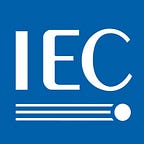8 technologies to watch in 2018
What are the key trends that will define the year ahead?
by Natalie Mouyal
The Consumer Technology Association (CTA) is best known for producing the annual CES show in Last Vegas. At this year’s event, CTA market researchers, Steve Koenig and Lesley Rohrbaugh identified eight key trends for 2018 that will be fuelled by access big data.
5G — the 5th generation wireless system
Imagine loading a two-hour movie in 3.6 seconds compared, with 6 minutes required with the current 4G network (100 Mb/s). This will be possible using the next generation wireless telecommunications system 5G, which promises higher speeds, lower latency and greater capacity.
Artificial Intelligence
In our homes, voice activated ‘assistants’ control connected devices such as lamps, door locks, thermostats, refrigerators and washing machines. They order our groceries online and play our favourite music.
The Joint Technical Committee of IEC and ISO on information technology (ISO/IEC JTC 1) and several of its subcommittees (SCs) prepare International Standards which contribute towards artificial intelligence. Given the rapid developments in AI across many industries, a new subcommittee (SC) on artificial intelligence, ISO/IEC JTC 1/SC 42, was set up in 2017 with the mandate of providing standardization in the area of AI as well as guidance to other committees developing AI applications.
Robotics
This year at CES, exhibitors showcased different robots targeting the consumer market. Examples include robots that can help you sleep by playing lullabies, or that vacuum the floor and put away clutter.
IEC produces International Standards for many of the advanced technologies contained in robots such as voice recognition. Additionally, IEC work covers navigation and hardware components such as cameras, lights, speakers and microphones and the internet of things (IoT), which is applicable to any connected devices
Biometrics
The collection of body measurements and calculations — biometrics — can be used as a form of identification. Increasingly, these measurements are incorporated into our technology since they can provide enhanced authentication and access control.
Facial recognition and iris scanning provide access to your smartphone and start your car, thumbprints open your padlock, and voice recognition protects your wallet. Meanwhile, not only can voice commands control various devices in the home, but also order products online through smart speakers.
These applications rely on Standards developed by ISO/IEC JTC 1/SC 37 for generic biometric technologies, including voice and facial recognition. Other IEC Standards that can be used for biometrics include electronic display devices (IEC TC 110) and sensors (IEC TC 47).
Biometric technologies raise concerns regarding privacy and data protection. ISO/IEC JTC 1/SC 27, IT security techniques, has developed the ISO/IEC 27000 family of International Standards for information security management systems (ISMS) to enable organizations to keep their data assets secure.
Virtual reality and augmented reality
The market for VR has expanded from the gaming market to business applications. It can be used to model manufacturing prototypes, provide training for first aid responders or help customers make purchasing decision by virtually experiencing a product or service.
Similarly, AR is becoming an increasingly popular tool with consumers and businesses. It facilitates shopping by allowing customers to try on clothing virtually or imagine furnishings inside their home.
ISO/IEC JTC 1/SC 24 provides Standards on interfaces for information technology-based applications relating to computer graphics and virtual reality while ISO/IEC JTC 1/SC 29 covers the coding of audio, picture and multimedia information. IEC Standards for sensors (IEC TC 47) and electronic displays (IEC TC 110) can also be also necessary.
Smart cities
Some example of smart city solutions already in use include the measurement and analysis of air quality, the monitoring of pedestrian and car traffic, and the automation of street lighting. An application in London, UK allows users to find available parking spots in real time, while in Paris users can measure their exposure to noise pollution.
The IEC provides a majority of foundational Standards in this area. The integration of energy generation, transportation, lighting, healthcare, and safety/security can be tailored to the needs of individual cities using hundreds of IEC International Standards (see more on IEC Smart City website).
Sports Innovation
Data-driven measurements, from activity tracking sensors that quantify physical activity to concussion sensing mouth guards, can help athletes and coaches improve performance and reduce injury. The data collected will provide information on athletic performance, sleep patterns and nutrition which can be aggregated to develop personalized training (see e-tech issue 02/2016 about sensors).
Digital health
Technology can be harnessed to affect health positively. It can be used to encourage behaviour change, enhance traditional medical practices, such as connecting doctors and patients in rural areas and, in some cases, serve as a therapy for a health condition.
Some new items showcased at CES included a ‘smart’ insulin pen that collects and transmits key diabetes data through a mobile application and a wearable device to improve sleep by reducing tension through personalized breathing exercises.
A longer version of this story by Natalie Mouyal appears in the latest edition of e-tech.
